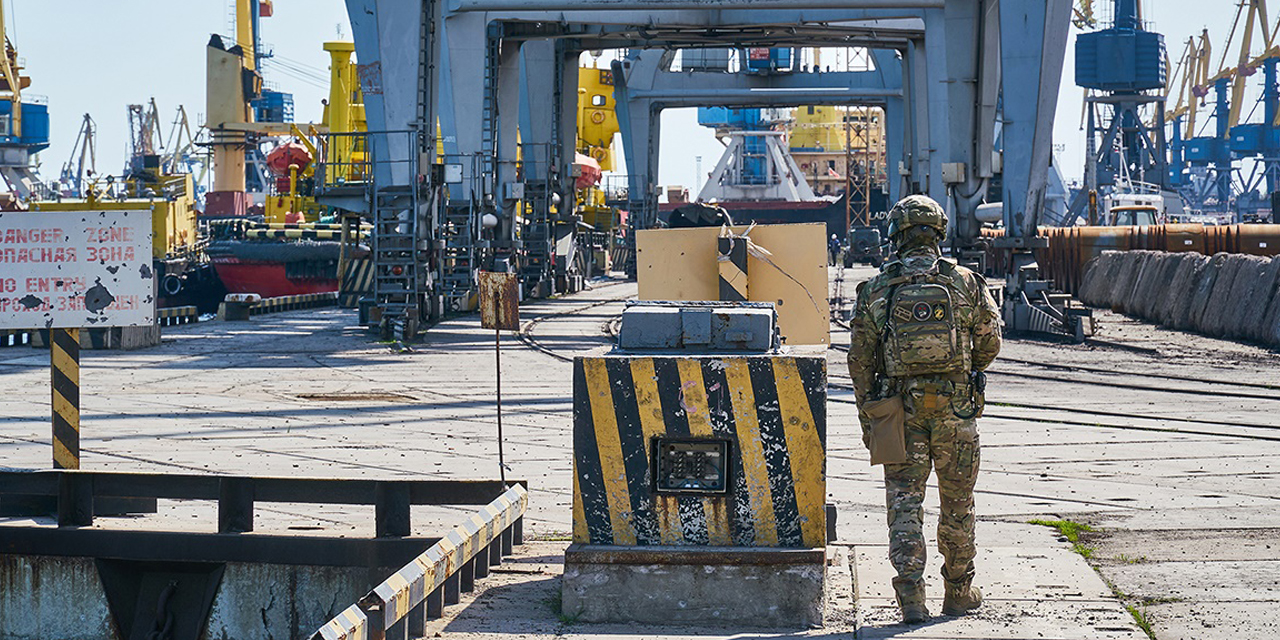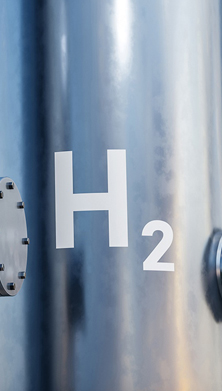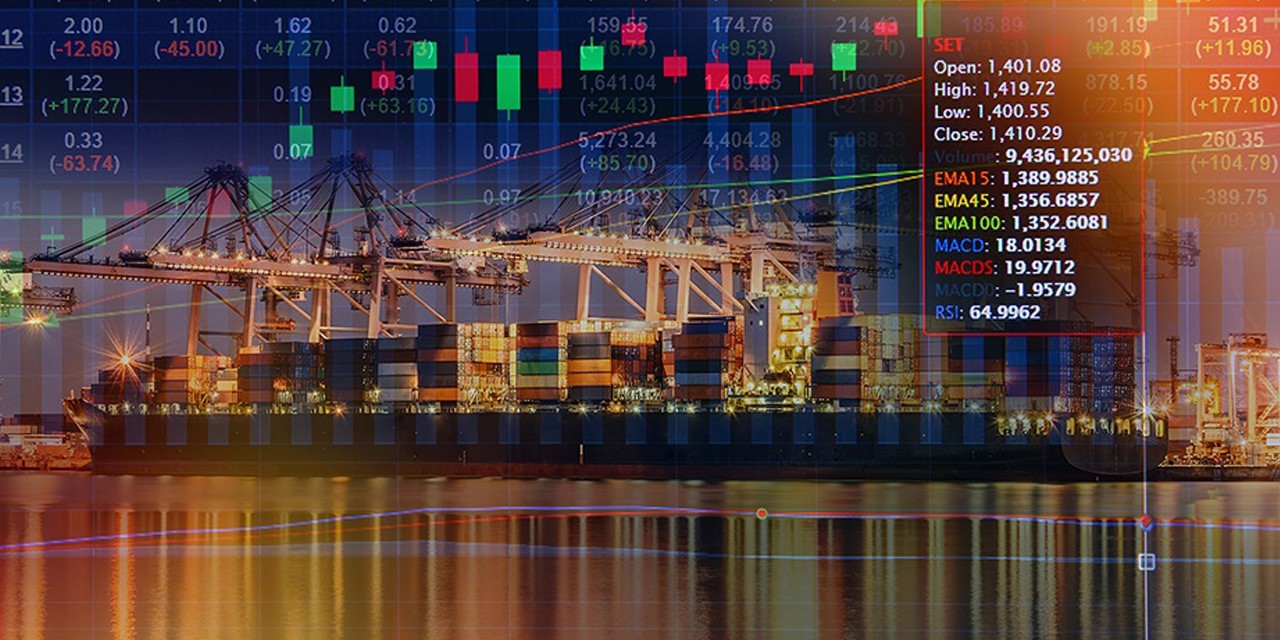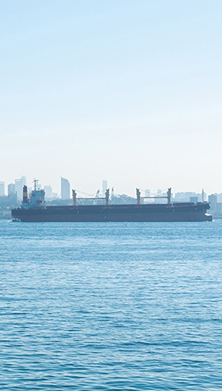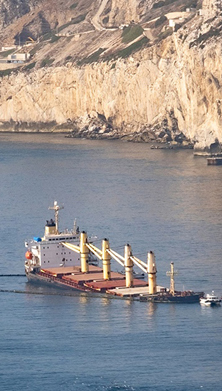This article is part of the
Safety and Shipping Review 2023
Ukraine hull and cargo claims crystalize
More than a year after Russia’s invasion of Ukraine, and the ripple effects of the conflict continue to be felt by shipping companies and insurers, while embargoes and sanctions severely limit trade with Russia.
When Russia invaded Ukraine in February 2022, 112 vessels crewed by more than 2,000 seafarers were caught in Ukrainian ports across the Black Sea and the Sea of Azov. One year later, and 331 seafarers were still stuck in Ukrainian ports. [1] Some 40 or more vessels were believed to still be trapped in the region as of March 2023, in addition to several merchant vessels that were damaged or destroyed in Ukrainian ports in the first months of the war.
The longer vessels are trapped, the higher the likely loss for insurers. Owners and operators have no access to trapped vessels for maintenance or repairs, while insurers are not able to carry out loss assessments. With the passage of time, salvage values decline.
The one-year mark is an important trigger for marine insurance policies. Under a marine war risk policy, a vessel could be considered a total loss when trapped or blocked for a defined period, typically one year for a hull policy, but as little as six months for cargo.
“As we have passed the 12-month time period, outstanding claims for trapped vessels have been declared as total losses,” says Régis Broudin, Global Head of Marine Claims at Allianz Global Corporate & Specialty (AGCS). “In almost 30 years of experience, this is the first time I have seen this theoretical total loss scenario realized under a blocking and trapping hull cover. This situation is unprecedented.”
Insureds would, however, be expected to take reasonable measures to try minimizing the loss or secure the vessel’s release, such as making use of any safe passage agreements. Signed in Istanbul on July 22, 2022, facilitated by the United Nations and Turkey, the Black Sea Grain Agreement is intended to create safe passage for vessels in the Black Sea exporting grain and fertilizer.
The grain corridor has enabled some vessels trapped by the war in Ukraine to escape. Vessels using the corridor are covered by a special insurance facility.
Despite the Black Sea Grain Agreement, risks for shipping in the Black Sea remain at a high level, with an ever-present threat of war. NATO [2] recently warned that the threat of collateral damage or direct hits on civilian shipping in the war risk area of the Black Sea remains high, while harassment and diversion of shipping in the area cannot be excluded. The threat of Global Positioning System (GPS) jamming, Automatic Identification System (AIS) spoofing, communications jamming, electronic interference and cyber-attacks in the area are also considered high.
Mines also continue to pose a threat, and a number have been detected and deactivated in the western Black Sea by coastal nations’ authorities in 2023. During a storm in March 2023, a stray mine drifted ashore and exploded, damaging the dock at a Ukrainian resort. Last year a Romanian minesweeper was damaged by a floating mine. [3]
“Floating mines will continue to pose a risk, even after the war ends. There is no reliable information on where mines are located, and many can go missing or drift, and that would be a big risk for vessels navigating these waters for some years,” says Captain Nitin Chopra, Senior Marine Risk Consultant at AGCS.

Shadow tanker fleet poses safety and environmental risk
In December 2022, the G7, the European Union and Australia agreed to set a maximum price of $60 per barrel for seaborne Russian oil products, with an option to adjust the price cap in the future to respond to market developments.
The price cap, which is in addition to US, UK and EU bans on Russian oil imports, prohibits operators and service providers in participating countries – including insurers – from facilitating the transportation of Russian oil above the price cap. Even above the price cap, there is limited appetite among insurers and reinsurers to underwrite Russian oil trade due to the administrative burden and enhanced safety and pollution concerns. Where insurance is provided, any breach of the price cap would result in the vessel being uninsured.
Russia and its allies, however, are seeking to circumvent these sanctions. According to the International Union of Marine Insurance (IUMI), Russia has assembled its own fleet of about 100 vessels to transport its oil and may have access to a further 200 vessels from countries like Venezuela and North Korea. [4] Estimates of the size of the shadow fleet vary, and range to more than 600, or roughly a fifth of the overall global crude oil tanker fleet, according to Reuters. [5]
This so-called shadow fleet enables Russia to sell its oil effectively without valid insurance. Of the 900 or so very large and ultra large tankers operating worldwide, around 20% were operating in a way that technically breaks sanctions against Iran, Venezuela or, increasingly, Russia, according to TankerTrackers. [6] Some 15% of the suezmax fleet and 11% of the aframax fleet were breaking rules.
Sanctions and Russia’s invasion of Ukraine have caused many leading certification providers, engine makers and insurers to withdraw their services from ships carrying oil from sanctioned Iran, Russia and Venezuela, resulting in reduced oversight of vessels carrying oil exports from these countries. Vessels in the shadow fleet are more likely to be older ships, operating under flags of convenience and under lower maintenance standards, explains Justus Heinrich, Global Product Leader Marine Hull at Allianz Global Corporate & Specialty (AGCS): “The sanctions environment has intensified significantly over the past year and the complexity of doing business for insurers and customers has increased significantly. At the same time, the increase in the number of shadow tankers is a worrying development, threatening the world fleet and the environment.”

According to analysis [7] of ship tracking and accident data, there were at least eight groundings, collisions or near misses involving tankers carrying sanctioned oil products in 2022 – the same number as in the previous three years combined. In March last year, shadow tanker Arzoyi ran aground off eastern China. Just days later the Petion was involved in a collision near Cuba. In November 2022, oil tanker Linda I was seized in Spain for drifting out of control – it was found to have several deficiencies and was in contravention of pollution regulations for using high-sulphur marine fuel without an exhaust gas cleaning system.
In May 2023, an uninsured, unladen 1997-built tanker, Pablo, exploded in Southeast Asia, reportedly killing three crew and washing oil up on nearby shores. [8]
“As this incident shows, there are a number of worrying scenarios, such as a collision with an uninsured shadow fleet vessel that causes major environmental damage,” says Captain Nitin Chopra, Senior Marine RIsk Consultant at AGCS.
Progress made in fighting piracy but recent activity shows no room for complacency
There were just 115 recorded piracy incidents during 2022, down from 132 in 2021 according to the International Maritime Bureau. [9] Ten years ago there were 138 incidents recorded in the first six months of 2013 alone.
The overall reduction in piracy activity in the high-risk waters of the Gulf of Guinea – down from 35 incidents in 2021 to 19 in 2022 – is a significant contributor to this decreased activity overall. In 2019, the Gulf of Guinea was the global piracy hotspot, accounting for 90% of global kidnappings reported at sea, with the number of crew taken increasing by more than 50% to 121. Today, piracy is at a near three decade low in the region.
The prompt and decisive actions and collaboration between international navies and regional authorities and navies in the region, such as the Nigerian Maritime Administration and Safety Agency (NIMASA) and initiatives such as the Gulf of Guinea Maritime Collaboration Forum SHADE (which was established to implement more effective operational counter piracy cooperation between navies, both regional and international, as well as the shipping industry and reporting centers) have positively contributed to the drop in reported incidents.
“However, sustained efforts are needed to ensure the continued safety of seafarers in the Gulf of Guinea region. Piracy is tied to underlying social, political and economic problems, which could deteriorate further. The region remains dangerous,” says Captain Rahul Khanna, Global Head of Marine Risk Consulting at Allianz Global Corporate & Specialty (AGCS). Two incidents were reported in the last quarter of 2022. In March 2023 pirates boarded a product tanker off the coast of Democratic Republic of the Congo, while in April another tanker was boarded about 300 nautical miles southwest of Abidjan, Ivory Coast – all crew were later reported safe with the oil cargo the target [10]. Seafarers are encouraged to follow industry best management practice recommendations in these waters.
Developments outside of the Gulf of Guinea should remain on the risk radar. A third of all incidents reported globally in 2022 were in the Singapore Strait with underway vessels successfully boarded in all 38 incidents. These incidents fall under the definition of armed robbery, but crews continue to be at risk. In February 2023, the Regional Cooperation Agreement on Combating Piracy and Armed Robbery against Ships in Asia Information Sharing Centre (ReCAAP ISC) reported nine incidents of armed robbery against ships in Asia (8 in the Straits of Malacca and Singapore). [11]
Armed robbery is distinguished from piracy in that the former occurs in internal waters, archipelagic waters and territorial seas, rather than on the international high seas.
Shipping continues to fall victim to cyber-attacks
In January 2023, DNV, [12] a Norwegian shipping classification society confirmed its systems had been disrupted by a ransomware attack, affecting around 1,000 vessels that rely on its technology. In April 2023, several ports in Canada including Halifax, Montreal, and Québec, suffered multiple cyber-attacks after being targeted by a distributed denial-of-service attack (DDOS) which caused their websites to crash. Reports indicated that a pro-Russian hacking group had claimed responsibility. [13]
The digital era may be opening up new possibilities for the maritime industry but its growing reliance on computer and software and increasing interconnectivity within the sector is also making it highly vulnerable. All four of the largest shipping companies, Maersk, Cosco, MSC, and CMA CGM have been victims of cyber-attacks in recent years. And according to an industry survey [14] just under half (44%) of maritime professionals reported that their organization has been the subject of a cyber-attack over a three year period. It also found almost a third of organizations do not conduct regular cyber security training while 38% do not have a cyber response plan. To date, most cyber incidents in the shipping industry have been shore-based, such as ransomware and malware attacks against shipping companies’ and ports’ database systems. But with the growing connectivity of shipping, the fact that geopolitical conflict is increasingly being played out in cyber space – recent years have seen a growing number of GPS spoofing incidents, particularly in the Middle East and China, which can cause vessels to believe they are in a different position than they actually are – and with the advancement of autonomous shipping, there is little doubt that cyber risk has become an important exposure that will require much more detailed risk assessment going forward.
Fortunately, there are also a growing number of resources available to help mariners learn about common vulnerabilities. Just one example is the internationally-recognized United States Maritime Resource Center, which assists the industry in cyber awareness, safety and security through evidence-based research. Then there are an increasing number of cyber security guidelines which can be followed, such as those from the International Maritime Organization, but also from other important organizations such as the Baltic and International Maritime Council (BIMCO), the Cruise Lines International Association (CLIA), Intercargo and Intertanko.
“There are also standard practices that can be implemented to reduce cyber risk, such as defining personnel roles and responsibilities for cyber risk management and identifying the systems, assets and data that, when disrupted, pose risks to ship operations,” says Captain Rahul Khanna, Global Head of Marine Risk Consulting at Allianz Global Corporate & Specialty (AGCS). “Shipowners also need to implement risk control processes and contingency planning, developing and implementing activities necessary to quickly detect a cyber event. Identifying measures to back up and restore cyber systems impacted by a cyber event is obviously crucial.”
These are challenging times for the shipping industry, but it is vital that investment in cyber risk education and security is not neglected at this time, despite economic and decarbonization pressures, as this risk has the potential to have catastrophic consequences, given the right confluence of events.
References
[2] NATO, Risk of collateral damage in the northwestern Black Sea area, February 28, 2022
[3] Romania Journal, Romanian Naval Forces’ minesweeper damaged after being hit by mine, September 9, 2022
[4] International Union of Marine Insurance, IUMI Eye newsletter, March 2023
[5] Reuters, Oil spills and near misses: more ghost tankers ship sanctioned fuel, March 23, 2023
[6] Tankertrackers.com, March 10, 2023
[7] Reuters, Oil spills and near misses: more ghost tankers ship sanctioned fuel, March 23, 2023
[8] Splash247.com, Pablo explosion a warning sign of worse to come, May 8, 2023
[9] ICC International Maritime Bureau, Piracy and armed robbery against ships report, January – December 2022
[10] The Maritime Executive, Ongoing incident: Pirates board product tanker in the Gulf of Guinea, March 27, 2023
[11] ReCAAP ISC: Nine incidents of armed robbery against ships in Asia in February, March 14, 2023
[12] DNV, Cyber-attack on ShipManager servers – update, January 23, 2023
[13] Port Technology, Pro-Russian hackers suspected in cyber-attacks on Canadian ports, April 14, 2023
[14] Safety4Sea, Report: Shipowners pay average of $3.1 million as ransoms due to cyber-attacks, March 22, 2022
Our experts
Annual survey identifying business risks
Allianz Risk Barometer

Top 3 business risks in Marine and Shipping in 2023
- Fire, explosion (29%) - 2022 rank: 3 (25%)
- Changes in legislation and regulation (25%) - NEW
- Cyber incidents (25%) - 2022 rank: 4 (23%)
Newsletter
Keep up to date on all news and insights from AGCS
